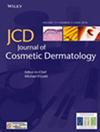Scalp itch without evident cause is an uncomfortable symptom that annoys many people in life but lacks adequate attention in academic.
To investigate the relationship between scalp itching and microorganisms, and identify the key microbes and predicted functions associated with scalp itching, furtherly to provide useful targets for scalp itch solution.
We performed microbial comparison between 44 normal subjects and 89 subjects having scalp itching problem with un-identified origin based on 16S rRNA gene sequencing and ddPCR (digital droplet PCR), and identified itch relevant microbes and predicted functions. To minimize false positive findings, another 43 itchy subjects were used for independent validation.
The three most abundant bacterial genus Cutibacterium, Lawsonella, Staphylococcus and predominant fungi Malassezia were not significantly different between the normal and itchy subjects, but an imbalance between Cutibacterium and Staphylococcus occurred in itchy scalp. As the predominant function contributor in the community, various Cutibacterium ASVs (amplicon sequence variants) were detected in itchy or normal subjects with low abundance and were subject specific. Some non-resident microbes from environment such as Leptolyngbya ANT.L52.2 and Pseudomonas were enhanced in itchy scalp and occupied an important ecological niche. The severity of itch was alleviated when these low abundant and low subject coverage ASVs were reduced or diminished.
Our findings raise the attention to (1) the ratio of Cutibacterium to Staphylococcus and (2) the low abundant bacteria on scalp, and provide potential solutions to ease scalp itch.


